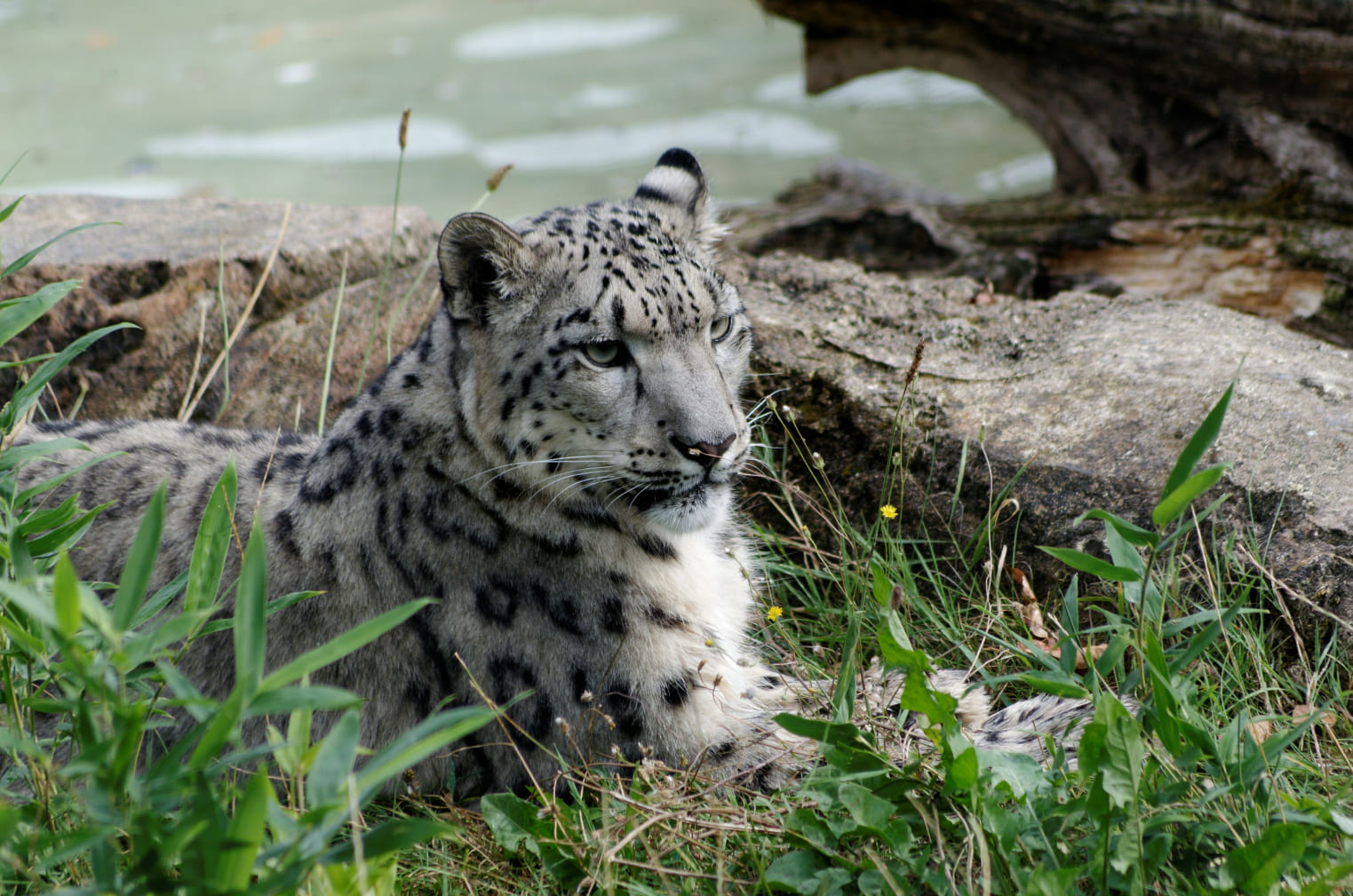Freshwater Wonders

Snow Leopard (Panthera uncia): A Ghost of the Mountains
The snow leopard, often called the “ghost of the mountains,” is one of the most elusive and majestic predators in the world. Found in the high-altitude regions of Central and South Asia, this solitary feline roams the rugged terrains of the Himalayas, Altai, and Tian Shan mountains. Despite its preference for rocky cliffs and snow-covered slopes, freshwater sources such as glacial rivers and mountain streams are crucial to its habitat.
Snow leopards rely on these water sources not only for hydration but also as hunting grounds, as prey species like ibex, bharal (Himalayan blue sheep), and marmots frequent these areas to graze. The snow leopard’s thick, spotted coat provides camouflage against the rocky landscape, allowing it to stalk its prey with remarkable stealth. It uses its powerful legs to leap great distances, sometimes covering up to 15 meters in a single bound to catch its target.
The survival of the snow leopard is deeply intertwined with the health of mountain ecosystems and their freshwater resources. Melting glaciers due to climate change are reducing the availability of water in these regions, threatening both the snow leopard and its prey. Additionally, habitat fragmentation and human-wildlife conflict, including retaliatory killings by herders, have further endangered this species.
Conservation programs are actively working to protect the snow leopard and its habitat. Initiatives such as sustainable livestock grazing practices, wildlife corridors, and community-based conservation efforts are helping to reduce conflict and promote coexistence. Protecting the snow leopard not only ensures the survival of this iconic predator but also safeguards the fragile mountain ecosystems that support countless other species.
